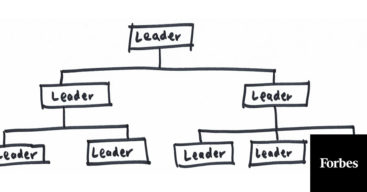The seeds of courage come from seeing the world through others’ eyes.
When you take the time to see the world through your others’ eyes, it changes your perspective in nuanced and powerful ways. You see firsthand what excites them, annoys them, perplexes them, or scares them. Patterns jump out at you. You see where, why, and how you can make a difference, not theoretically, but really. Those realizations drive the courage and conviction to act.
Following is a brief case, excerpted from my book Taking Smart Risks, of how Matt Hlavin of Thogus Products Company found the courage to make an against-the-odds bet by seeing the world through his customers’ eyes.
See the World Through Your Customers’ Eyes
Custom injection molders make plastic parts for just about everything you use, from controls in cars to keys on computers. Reactive in nature, these companies work on thin margins and are subject to the whims of their customers.
For years, running a custom injection-molding company was pretty straightforward. You landed a few large customers—say automakers—and then churned out parts for them for as long they would let you. Your customers dictated how you ran your business, from processes to pricing to payment terms. Your main point of contact was a low-level purchasing manager whose job was to constantly beat you up on price. While this was frustrating, you took the beatings because there were thousands of competitors ready to take your place if you balked. It wasn’t a particularly sexy or attractive industry, but it paid the bills.
Those were the good old days.
Now, with so much manufacturing taking place overseas, the molding business in the United States has gotten tougher. Eight thousand custom injection molders are all fighting for a smaller and smaller piece of a shrinking pie. These days, it’s considered a win if you can even find a low-level purchasing manager to beat you up. A tough business has gotten brutal.
But you wouldn’t guess it if you walked into Thogus Products Company, a custom injection molder in Cleveland, Ohio. Whiteboards full of big ideas are everywhere. Twenty- to thirty-year-olds race around with a sense of purpose and energy. If it weren’t for the millions of dollars of manufacturing equipment, you’d think you’d entered a Silicon Valley start-up. Thogus is a far cry from your father’s or grandfather’s Rust Belt.
Matt Hlavin, CEO of Thogus, calls it the New Industrial Revolution. Instead of just churning out parts, he’s adding high-value services that support the manufacturing process. Thogus now provides design, development, and rapid prototyping services that used to be the purview of his customers’ R&D organizations. This has allowed Thogus to move up the food chain into more strategic conversations.
While successful now, this was a risky proposition when Hlavin started adding these services in 2009. In the middle of a recession, Hlavin’s company, like many others, was in a decline. It was going to take significant start-up capital to get these services going. Moreover, Hlavin had never delivered these services before and had no idea what he was getting his company into.
But in the face of big obstacles, Hlavin pushed forward anyway. Where did he find the confidence?
He credits the time he spent with his customers.
As the recession deepened, Hlavin listened more and more to his customers’ talk about their challenges. Budgets were tight and showed no signs of loosening. Laid-off design and engineering positions weren’t coming back, unlike in previous recessions. Everyone was having to do more with less. Teams were getting burned out. Fear and anxiety were rampant.
As Hlavin describes it, “These were big, game-changing problems for our customers, and no one was helping them solve them in a beginning-to-end, cost-effective way. I realized there was a ‘blue ocean’ market opportunity to help current and new customers become more efficient, while simultaneously improving quality. I heard these challenges so often that I became convinced that if I built a suite of services to address them, people would come.”
Over the next couple of years, Hlavin invested more than $2 million in rapid prototyping equipment that typically only large manufacturers like GE and Boeing buy. He also purchased a design firm and kept hiring as his competitors were continuing to let people go.
In the beginning, others thought he was crazy. But by 2011, it was clear that Hlavin had made smart moves. As he had predicted, customers saw the value of his new services and started to buy.
“We can design, prototype, and test things very quickly here,” one customer noted. “Furthermore, because these guys build their manufacturing knowledge into the design phase, we don’t end up with pretty concepts that are unmanufacturable. When it’s time to mass-produce, we can hit the ground running. Thogus’s end-to-end approach is a great idea.”
Of course it is. After all, it was Hlavin’s customers who had given it to him.
Spending More Time with Customers
Sometimes the most powerful business advice is the simplest.
What Matt Hlavin did wasn’t rocket science. He spent time with customers and listened to them—a lot. He didn’t ask them for specifics on what they wanted; he just started to see the world through their eyes. This is an important distinction, because customers often can’t tell you what they really want. They don’t really know until they see it. That means you just have to spend enough time with them to be able to start to discern it.
Business people give a lot of excuses for not spending enough time with customers. Being too busy is the most common one I hear. Whenever an executive tells me that she’d love to spend more time with her customers, but she’s too busy, I ask to see her calendar for the coming month. Invariably, 50 to 70 percent of what’s scheduled could easily be considered lower priority than spending time with important customers.
Prioritize time with customers (and potential customers) and the payback is always huge.



